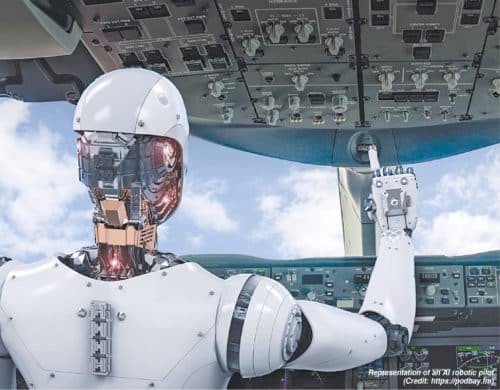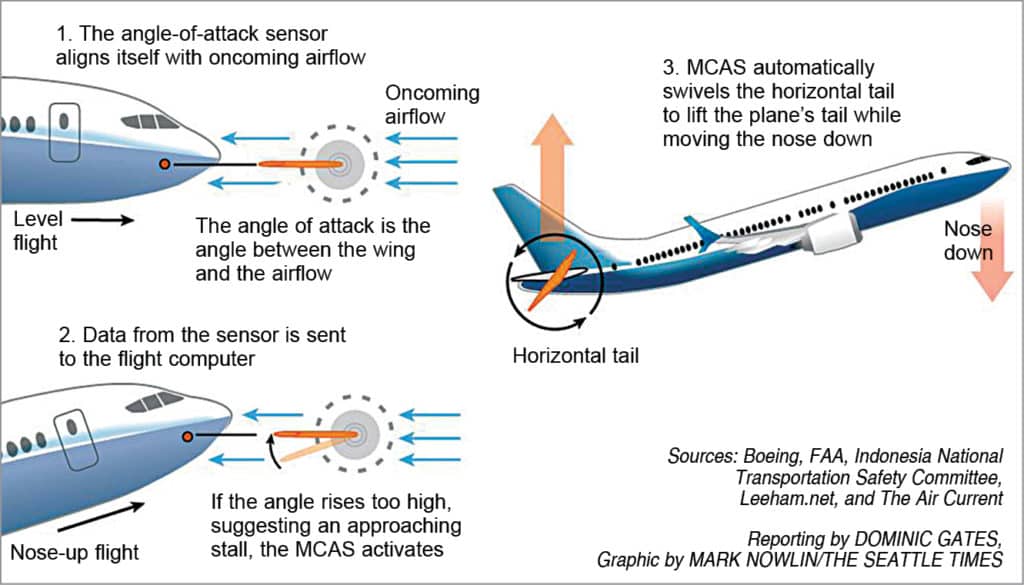As artificial intelligence (AI) continues to evolve and expand, companies are seeing huge changes in the field of aviation. Big brands are investing in AI technology to enhance their products and services to better serve their customers.

Artificial intelligence (AI) tools and technologies are used by some of the world’s leading airliner service providers to deliver more personalised traveling experiences to their customers. AI, machine learning, machine vision, robotics and natural language processing are the future of the aviation industry. Predictive analytics, customer feedback analysis, auto-scheduling, pattern recognition and targeted advertising are all part of AI technology taking the aviation industry to a whole new level.
AI technology is becoming more advanced and complex, and is finding applications in the aviation industry in multiple ways, including auto-pilot features. Due to factors like cost savings and shortage of qualified pilots, many companies have expressed an interest in reducing or even eliminating the number of pilots in the cockpit. There have been speculations that AI may someday replace human pilots. This article covers the various applications of AI in aviation and discusses how close AI is to replacing human pilots in the future.
AI in the Aviation Industry
Some of the areas where AI is being, and can be, applied in the aviation sector are:
Customer service agents
AI can be used to assist customers in many ways, including assisting check-in requests, providing accurate information on future flights and status of current flights, answering common questions and more on Internet-enabled devices, and so on.
AI can also be used in air cargo for such purposes as revenue and safety management.
Check-in
Checking in at the airport before boarding the flight is a vital task. AI technology can be used for this purpose in addition to identifying passengers. Many airlines are already using AI for online check-in via mobile apps and ticketing kiosks for a better flight experience.
AI technology will make the process of passenger identification faster and easier. Security scanners and biometric identification with AI will also help security personnel on duty to be more efficient.
Baggage screening
Baggage screening is another important task at any airport. AI can help duty managers simplify this process. AI-based technology like Syntech ONE comes handy in such applications. It can detect threats at x-ray and CT security checkpoints with automated screening. The system can be installed at airports to screen baggage in multiple passenger lanes.
Maintenance prediction
AI technology can also be used to predict potential failure of aircraft. Leading aircraft manufacturers use cloud-based data storing systems to improve reliability of aircraft maintenance. This allows the fleet to collect and record a huge amount of real-time data. AI-based predictive analysis provides a systematic approach for aircraft maintenance. Use of AI makes the process of maintenance easy and reduces failure rates.
Flight engineers and pilots
A flight engineer is a member of an aircraft’s flight crew, who monitors and operates complex aircraft systems. He or she is also responsible for pre- and post-flight aircraft inspections, and ensuring that weight and balance of aircraft is correctly calculated to ensure centre of gravity is within limits.
Now, the flight engineer’s role has been replaced largely by computerised engine systems. Any malfunction, abnormality or emergency is displayed on an electronic display panel, and the computer automatically initiates corrective action to rectify the abnormal condition.
While some non-pilot crew members have been replaced by AI, human pilots still maintain their skills in the cockpit, monitoring the systems. With advanced AI technology, hands-on piloting by human pilots might be reduced. Then, human pilots might be able to issue commands to the computer rather than having direct manual control.
Air traffic control
One of the biggest challenges at the airport is changing weather and height of the control tower that can cause delays in air traffic. During poor weather, air traffic control (ATC) must rely on radars to keep the airport running smoothly.
In an effort to solve this problem, some airports have installed ultra-high-definition cameras with AI technology on top of the towers. AI can be used to deliver clear views of the airport to traffic controllers. AI platforms like AIMEE, developed by Searidge Technologies, utilise machine learning to interpret images, record aircraft and notify controllers so that they can signal the next plane for arrival on the cleared runway.
Bomber pilots
During the Gulf War, 297 missions were flown by AI-based autonomous aircraft without anyone onboard or any remote human pilot controlling them. Many explosive payloads were delivered to targets by such aircraft that flew hundreds of kilometres.
Ground attack pilots
Some ground attacks are now carried by unmanned combat aerial vehicles (UCAVs) managed by remote pilots instead of manned aircraft. These UCAVs are intended to have full autonomy. Here, the main human interaction with the aircraft is not piloting it but authorising firing of weapons.
Helicopter pilots
In some remote areas, power-line inspection is being carried out from helicopters with human pilots, but this can be replaced with AI-based autonomous drones.
How close is AI to replacing the human pilot
Robots replacing human pilots is not good news for the latter. In principle, an autonomous combat aircraft capable of carrying out air-to-air and ground-attack missions is technically feasible. And these autonomous aircrafts are already available in limited areas.
Like any other industry, the aviation industry will embrace cost-cutting using robots. With advanced AI technology, more and more aircraft controls are being entrusted to AI systems. Robots and cognitive machines are already more advanced than humans at most jobs.
But replacing human pilots by AI is a complex mission, and would involve technical, legal and political aspects. Auto-pilot feature to an extent can fly a plane but it generally involves some human interaction. Complete automation without human intervention is not an easy task. Moreover, to get an auto-pilot certified by a regulatory body is a massive undertaking.
Autonomous commercial aircraft would also require updating entire ATC systems. If an ATC needs to reroute the plane, or issue a change in course, currently it is handled via person-to-person communication. Some kind of command to the plane via data link would be needed to do it via an automated system. Thus, automation will be needed both in aircraft and the ATC system.
A UCAV has some intelligence along with the capability of flying to a pre-determined location. Dropping some mines and then returning to a base location might be militarily cost-effective. But we cannot compare auto-pilot features in commercial planes with UCAVs, because UCAVs have limited features and control functions.
There are many risks involved with pilot-less commercial planes. Therefore experts feel that fully-functional commercial planes without human pilots may not be feasible in the next decade or so.
Drawbacks of AI in aviation
While AI is promising for the future of the aviation industry, it has some pitfalls as well. First, AI is quite expensive. All airlines might not be able to afford or invest in such new and expensive technology.
Second, it will take some time for implementation by the worldwide aviation industry.
Recently, Boeing was under intense scrutiny after its 737 Max Jet was involved in two deadly crashes. In March, Ethiopian Airlines Flight 302, a Boeing 737 series crashed minutes after it took off, and all 157 people onboard died. The first such crash took place in October 2018 in Indonesia. Lion Air Flight 610 crashed just minutes after taking off from Jakarta, killing 189 people.
MCAS software installed in jets was the key reason behind the fatal accidents. These incidents are an eye-opener for the use of AI technology in the aviation sector.

Commercial aircrafts are complex systems, and pilot-less planes put into service is not an easy job. Even if such systems exist, only a few people are willing to fly in fully-autonomous aircraft. A survey done in 2018 has shown that just under thirty per cent of the US flyers are willing to fly on autonomous aircraft.
Conclusion
We are going to witness a huge change in the world of aviation through AI technology. Though AI is still at a nascent stage, we have already seen a number of changes in the aviation industry. Applications like crew management, flight management, ticketing, maintenance and passenger identification are all centred around improving customer experience.
Advances in AI like auto-pilot features are reshaping the future of the airline industry. And yet the notion that AI would fully replace human the pilot is still a distant dream. But yes, AI is going to improve overall airline operations and businesses in a big way!







